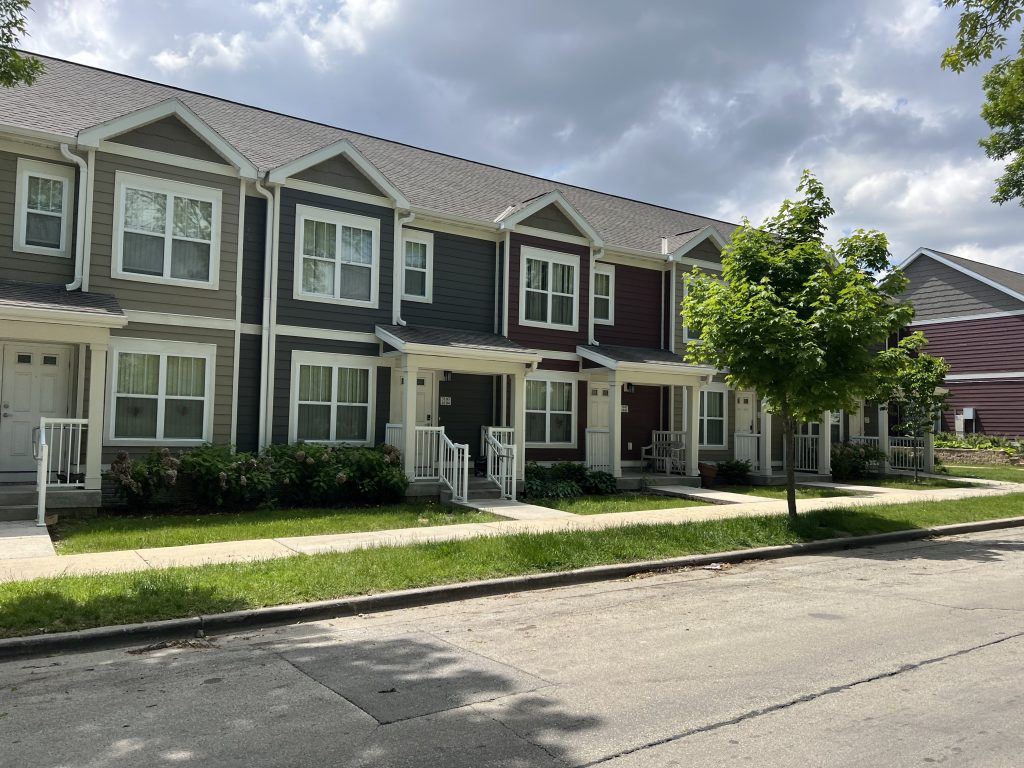Council Adopts Growing MKE Plan
Now known as 'Housing Element,' plan aims to fight off gentrification, create 'missing middle' housing.
It wasn’t exactly what advocates envisioned three years ago when the process started, but the City of Milwaukee has taken a significant step in increasing the supply and types of housing available.
On Tuesday, the Common Council approved the Housing Element of the city’s comprehensive plan, formerly known as the “Growing MKE” plan.
“This will help us to finally begin to address the housing crisis that continues to plague us,” said Alderperson JoCasta Zamarripa, a lead sponsor. “There has been a tremendous amount of compromise in the Housing Element.”
The compromise is most visible in the name, which was changed to make it clear that the plan was equally about supporting current residents as it was future residents.
But several major policy provisions were also dropped along the way. Before the plan’s first public hearing in July 2024, a proposal to legalize four-unit buildings in many areas was removed. After that initial hearing was hotly contested, the plan was “watered down” further, as some alders complained, removing a citywide legalization of duplexes and three-unit triplexes.
A 49-page benefit and harm analysis was also added to the 72-page plan. The analysis makes it clear that the Department of City Development intends for the proposal to help address rising housing prices and meet changing household demographics, while working to prevent gentrification and displacement.
“I can tell you that rent is skyrocketing here in Milwaukee,” said Zamarripa, who told her colleagues she has always lived in rental housing.
She said the proponent made a “huge compromise” in agreeing to remove certain components. Council members, including Ald. Robert Bauman, had raised concerns that earlier versions removed too much power from council members by permitting more development without legislative approval.
Remaining in the plan are a series of tweaks aimed at increasing the types and supply of housing. The plan, which includes specific components that require future legislation to be formally added to the zoning code, calls for increased housing in transit corridors, the legalization of new types of housing such as cottage courts, townhomes, and accessory dwelling units, as well as state policy changes. It includes strategies to regulate short-term rental units on platforms like Airbnb and technical changes, like minimum lot size adjustments.
Many of the components aim to increase the supply of “missing middle” housing, housing types between the size of a single-family home and a large apartment building.
“We want all kinds of options for housing,” said Ald. Alex Brower.
Brower was elected in an April special election, replacing the late Jonathan Brostoff, the original lead sponsor. The plan was a hot button issue in the campaign and Brower, referencing a forum moderated by this author, said he was one of only two candidates who made it clear that they favored eliminating single-family zoning, as is applied near UW-Milwaukee, to allow more housing to be built. He said the voters spoke in choosing him and he was signing on as a co-sponsor on the council floor, in part, to honor Brostoff. Zamarripa also honored Brostoff in her remarks.
By incorporating the Housing Element plan into the city’s state-required comprehensive plan, it gives the components the “force of law,” said DCD deputy commissioner Sam Leichtling on July 8 when the Zoning, Neighborhoods & Development Committee reviewed it.
Leichtling said that even with Milwaukee’s population shrinking in recent decades, it still needs more housing, given the reduction in household size. “We do need more housing for our existing population,” he said.
During Tuesday’s council meeting, Ald. Marina Dimitrijevic also signed on as a co-sponsor, joining existing co-sponsors Zamarripa, Mark Chambers, Jr., Peter Burgelis and Sharlen P. Moore.
Council President José G. Pérez and DiAndre Jackson cast the only votes against the plan’s adoption. Ald. Scott Spiker abstained from voting on the proposal.
Earlier in the meeting, Spiker unsuccessfully sought to add an extra approval process to the stand-alone proposal to allow construction of accessory dwelling units (ADUs) in areas designed for single-family housing. Without the approval process, Spiker said the ADU plan would eliminate single-family zoning and allow any owner-occupant to construct a duplex without informing neighbors or the area council member. Pérez co-authored the ADU proposal with Bauman as a way of advancing one of the favored components of the Housing Element plan while the larger policy appeared stuck, but both ended up being passed on the same day after the ADU proposal was delayed.
The ADU legislation was passed by a single vote.
In April, Pérez and Bauman’s other Growing MKE carve-out, a zoning designation that allows up to eight-unit buildings, was approved unanimously. It has not been applied to any properties.
The seven key priorities listed in the Housing Element plan are: increase housing choice and access, repair homes and neighborhoods, commitment to intergovernmental collaboration and advocacy, commitment to home ownership, commitment to anti-displacement, economic resilience and walkable neighborhoods.
Dozens of letters of support were submitted to the city, including from Near West Side Partners, 1000 Friends of Wisconsin‘s Together for Homes coalition, AARP Wisconsin and the Community Development Alliance.
Leaders of Metcalfe Park Community Bridges, originally one of the leading opponents, flipped to support the plan after DCD made revisions and did additional community engagement in the past year.
Milwaukee’s zoning code was initially adopted in 1922 and last substantially overhauled in 2002.
Mayor Cavalier Johnson is scheduled to sign the Housing Element plan into law Wednesday morning.
Legislation Link - Urban Milwaukee members see direct links to legislation mentioned in this article. Join today
If you think stories like this are important, become a member of Urban Milwaukee and help support real, independent journalism. Plus you get some cool added benefits.
More about the Growing MKE proposal
- Milwaukee Aims To Build ‘Missing Middle’ Housing in 2026 - Jeramey Jannene - Oct 29th, 2025
- Despite Its Passage, ‘Growing MKE’ Still Not A Done Deal - Jeramey Jannene - Sep 16th, 2025
- Mayor Signs Housing Legislation, Praises Late Jonathan Brostoff - Jeramey Jannene - Jul 16th, 2025
- Council Adopts Growing MKE Plan - Jeramey Jannene - Jul 15th, 2025
- After Lengthy Debate, Council Legalizes Carriage Homes - Jeramey Jannene - Jul 15th, 2025
- Housing Plan Wins Key Council Committee Endorsement - Jeramey Jannene - Jul 9th, 2025
- City Hall: Committee Waters Down Proposed ‘Granny Flat’ Plan - Jeramey Jannene - Jun 17th, 2025
- Madison Pursuing Its Own Zoning Reform Similar To ‘Growing MKE’ - Sarah Lehr - Jun 12th, 2025
- ‘Growing MKE’ Proposal Picks Up Key Endorsement - Jeramey Jannene - Jun 2nd, 2025
- City Revises Its ‘Growing MKE’ Plan, Including Changing The Name - Jeramey Jannene - May 1st, 2025
Read more about Growing MKE proposal here
Political Contributions Tracker
Displaying political contributions between people mentioned in this story. Learn more.
- October 23, 2024 - DiAndre Jackson received $75 from Sharlen P. Moore
- April 23, 2019 - JoCasta Zamarripa received $100 from Peter Burgelis
- March 4, 2016 - Cavalier Johnson received $35 from Sharlen P. Moore
- February 20, 2016 - Cavalier Johnson received $250 from Robert Bauman
- May 5, 2015 - José G. Pérez received $10 from Cavalier Johnson
- May 5, 2015 - José G. Pérez received $100 from JoCasta Zamarripa





















